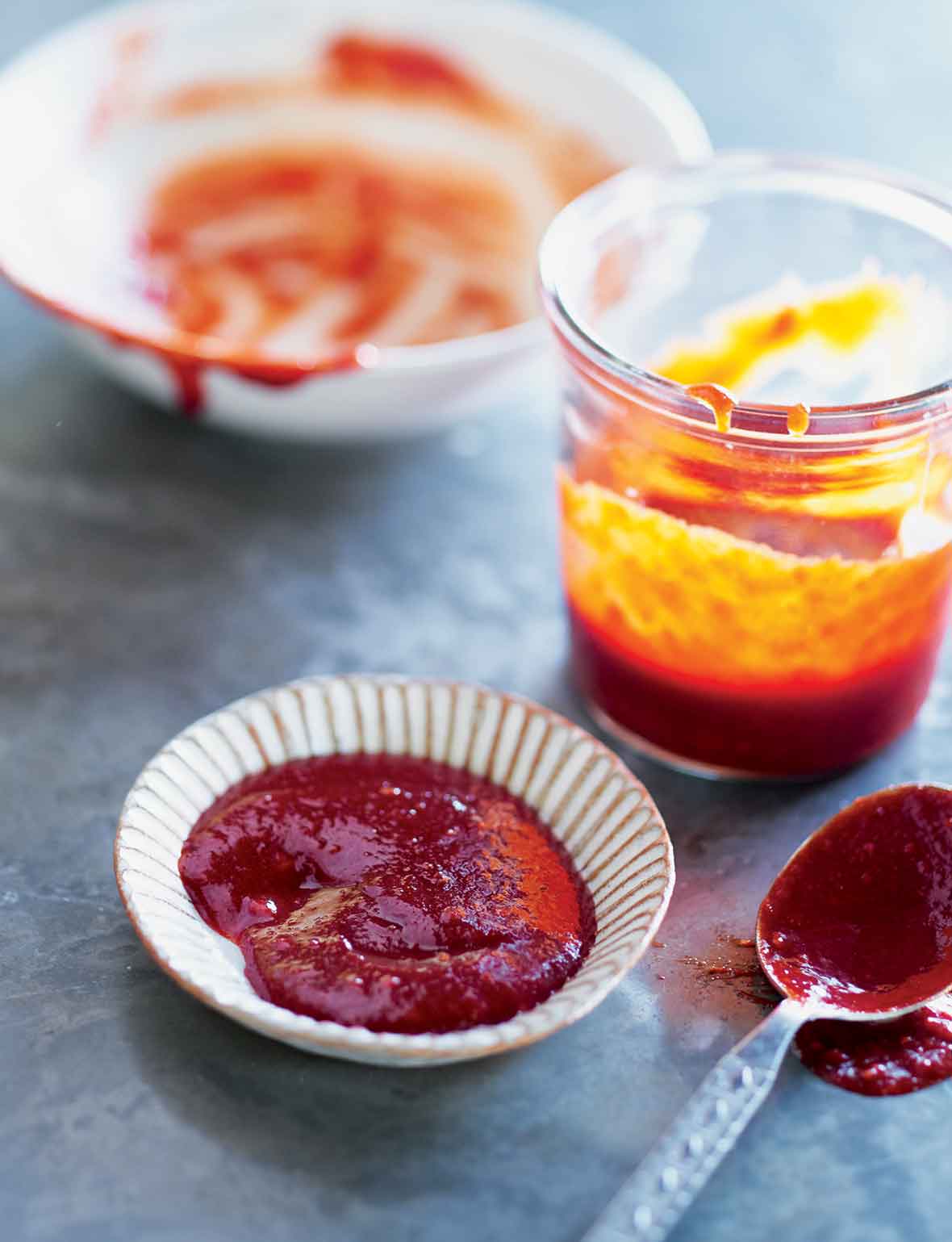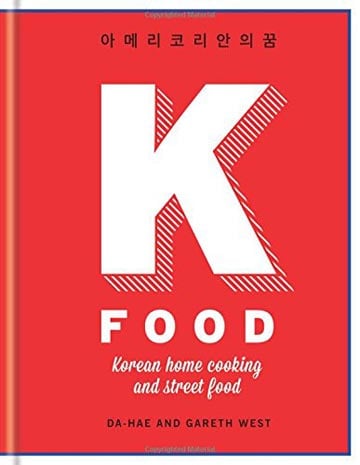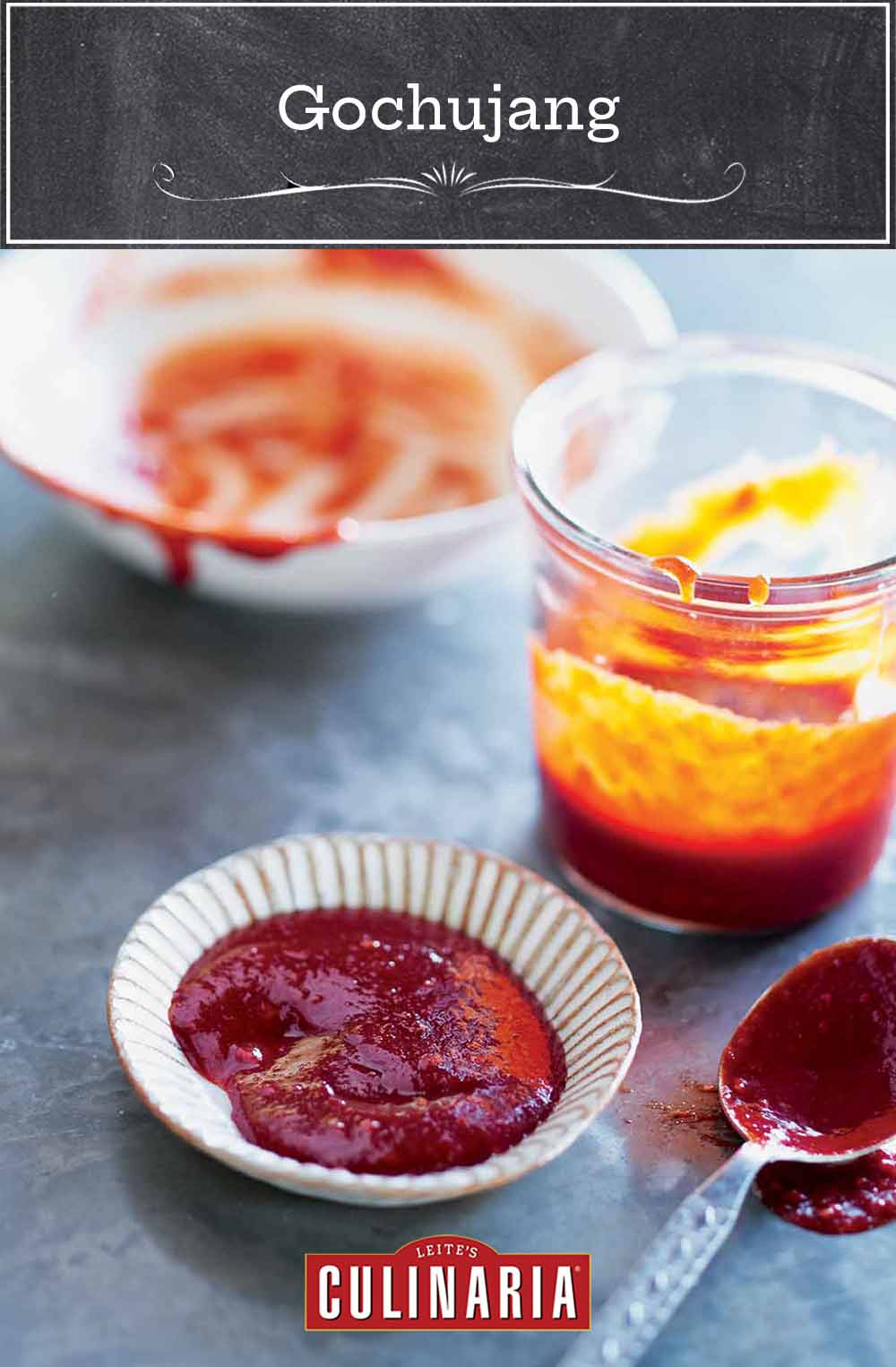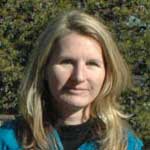
Got gochujang? It’s a salty, savory, and rather unforgettably pungent red chile paste from Korea that’s far more complicated than Sriracha and lends its rather unforgettable accent to anything. Pronounced “gah chu jang,” it has a sweet heat that varies in intensity from brand to brand and recipe to recipe.
This rendition from cookbook author Da-Hae West is a quick riff on the stuff found in rectangular tubs with a flip-top lid at Korean markets using simple ingredients you can find in any ordinary supermarket. Truth be told, some of our testers find it to be a touch more fiery than supermarket brands, but you can easily modify it for more timid palates by using a touch less cayenne or a little more sugar.
Keep in mind, gochujang isn’t the sorta thing you dab on something at the table. It’s instead incorporated into all manner of recipes to lend a magnificent and unparalleled depth.–Renee Schettler Rossi
How To Use Gochujang
How to use gochujang is really up to you and your individual palate. Traditionally, it brings a depth and complexity that simply can’t be equaled by other hot sauces to almost everything Korean, including bulgogi, bibimbap, kimchi, Korean fried chicken, Korean beef tacos smothered with kimchi, countless pork preparations, stir fry dishes, and noodle creations of all sorts. Call us rebels, but we also quite like to incorporate it into all manner of untraditional things, including…
Incorporated into ground beef for burgers
Mixed into marinades (be careful as the sugar in the gochujang can cause meat to scorch if cooked over crazy high heat)
Stirred into braises and stews (including slow-cooker recipes)
Tossed with chunks of winter squash prior to roasting
Added to deviled eggs
Stirred into soups
Mixed with mayo and slathered on sandwiches
Got a can’t-live-without use for gochujang? Let us know in a comment below!

Cheater’s Gochujang
Ingredients
- 1/2 cup white miso paste
- 1/4 cup light corn syrup (or substitute agave syrup or honey)
- 1/4 cup cayenne pepper, or less to taste
- 2 tablespoons mirin
- 1 tablespoon superfine sugar (or just blitz some granulated sugar in a blender or food processor until finely ground but not powdery), or more to taste
- 1 garlic clove, minced
Instructions
- Stir together the miso, corn syrup, cayenne pepper, mirin, sugar, and garlic until well combined.
- Decant the gochujang mixture into a clean jar or resealable container, cover, and stash it in the refrigerator for up to several weeks. The gochujang is fine to use immediately but if you wait several days the flavor will be more melded and nuanced.

Explore More with AI
Nutrition
Nutrition information is automatically calculated, so should only be used as an approximation.
Recipe Testers’ Reviews
Gochujang is an incredibly useful Korean condiment that combines fermented soybean funkiness with chile heat and unabashed sweetness. This simple recipe using supermarket ingredients takes only a couple minutes to put together and hits the same notes. I did a side-by-side tasting with a commercial gochujang to compare the flavors. This recipe makes a Korean chile paste that is considerably hotter, less salty, and less sweet than store-bought renditions. Whether that’s a good thing or not depends on what you are going for, but you can always add more miso and more sweetener, can’t you? Too hot? Reduce the chile or, better yet, use a blend of hot and mild ground chiles.
This version came out quite a bit thicker than my jar of commercial gochujang, which is also not really a problem. You can always thin it with water, more mirin, or, better yet, bourbon.
Gochujang is one of my new favorite things to add to sauces and marinades these days. I LOVED making this recipe because it demystifies an otherwise mysterious—and delicious—ingredient that is sometimes hard to come by, so it’s great to have the knowledge in one’s back pocket to whip it up so easily. Although I can find it at almost any of the stores I frequent, it isn’t that way for lots of folks, and I still don’t have a huge choice of brands.
One change I needed to make was actually due to another ingredient I couldn’t find to save my life—corn syrup! For whatever reason, it was not in ready supply. So, I improvised and used dark agave nectar, which I actually think was a great swap! (I’m also more likely to have agave nectar on hand at home anyhow, making this recipe even more realistic for me to make). I used some of the gochujang the day after making it, and though it added a great kick to my dish, I felt like the depth of flavor wasn’t quite there yet. I’d love to know how long is best to wait until the flavors meld. Other than that, it was fantastic, and I’m thrilled to have this simple sauce in my arsenal.












Can I use any miso paste for this recipe please?
We recommend you use white miso paste for this recipe, Chanel. Yellow would likely also be ok here, but red miso has a much stronger flavor that may overwhelm the gochujang.
I want to make https://www.youtube.com/watch?v=P1sJBC5ixyk using homemade gochujang. Can I use fish sauce to replace the miso paste?
Source: https://www.acouplecooks.com/miso-substitute/
Chanel, fish sauce is occasionally used as a substitute for miso, however, in this case, given the large amount I’d be concerned that the flavor of the fish sauce would overwhelm the gochujang and you’d get something that tastes completely different. It would be best to seek out miso or use store-bought gochujang for your ramen.
How about soy sauce? I want to make gochujang using homemade ingredients. There has to be a miso substitute.
Miso is a tricky ingredient to substitute for, Chanel. Nothing really has the same flavor and texture. Soy sauce would be the closest flavor-wise, but keep in mind that you’ll need to use about half the amount of soy sauce since its flavor is so strong and that your finished gochujang won’t have the same thick consistency as regular gochujang.
How much soy sauce should I use? Teaspoons, tablespoons or cups?
Chanel, you can try making the recipe with 1/4 cup of soy sauce.
How would you make Gochujang with homemade ingredients?
Chanel, the method in this recipe works great. Simply follow the directions. It’s easy and quick to put together.
I keep a 3 lb. tub of gochugau in my fridge and a one lb. bag of gochugaru in my pantry. We cook a lot of Korean, Chinese, and Japanese in our house. I would never try making homemade gochujang because of the effort involved. Fortunately I have access to many Korean markets so I find it easy enough to make. But from talking to my Korean friend who is one heck of cook this is what I’ve learned:
For one, there is no miso in gochujang. It’s make with a powered fermented soybeans. The ground red pepper used in everything Korean (including baby food I think) is called gochugaru, and it is sweeter and with a little bit of smokiness. It doesn’t taste like cayenne and different varieties of the chili vary in heat. Maybe it’s the terroir. Gochujang also contains rice syrup, barley malt, and sweet rice flour. Gochujang also requires a few months of fermentation.
I can see where you went with using miso but it’s really not the same flavor.
Bkhuna, you are correct, we did make some substitutions according to what most home cooks, even those with relatively adventurous palates and undaunted approaches to their cooking, tend to have on hand. Miso gives depth but not the same depth as the original, it’s true. By way of explanation, not excuse, we ultimately decided to share this recipe after testing it based on what our recipe testers, who are home cooks of varying abilities and experiences, who are very familiar with the taste of gochujang reported, which was that it worked quite well and did indeed work more than adequately in its place. But yes, you are correct, it is not traditional gochujang.